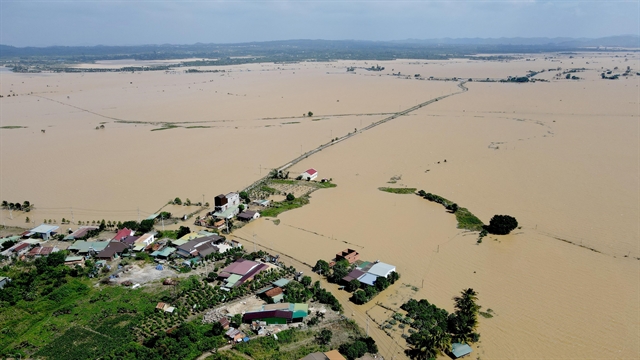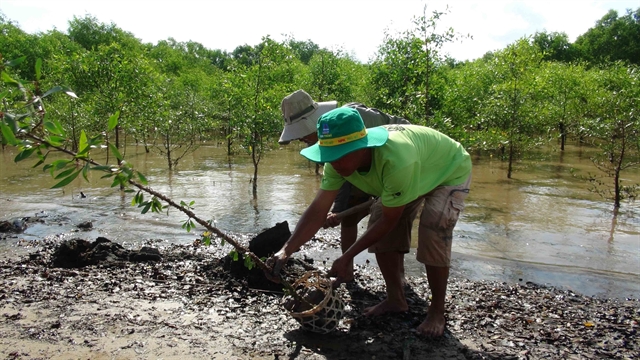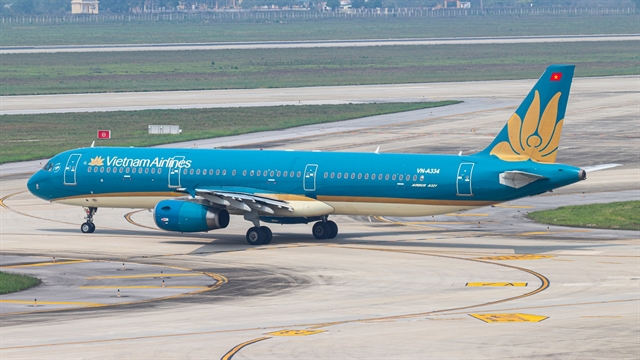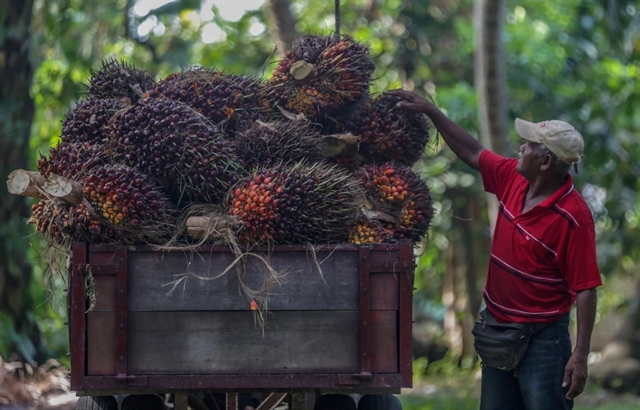 Society
Society

Nearly 6,000ha of mangrove forests in the Cửu Long (Mekong) Delta province of Trà Vinh are managed and protected by households that breed aquatic species in the forested areas.

|
TRÀ VINH — Nearly 6,000ha of mangrove forests in the Cửu Long (Mekong) Delta province of Trà Vinh are managed and protected by households that breed aquatic species in the forested areas.
Phạm Minh Truyền, director of the department, said the province has nearly 9,000ha of coastal protection forests, including more than 6,000ha of mangrove forests. Most of the households and organisations that protect forests and breed aquatic species do so to earn extra income.
In 2011, Nguyễn Văn Ngoan in Duyên Hải District’s Trường Long Hòa Commune was allocated 10ha of forestry land. Last year, he planted mangrove trees and bred black tiger shrimp, earning VNĐ170 million (US$7,360) from 300,000 black tiger shrimp.
Breeding black tiger shrimp in mangrove forests yields a lower income than industrial shrimp farming or intensive shrimp farming, but it is sustainable. “I have never suffered losses,” Ngoan said.
The shrimp are considered organic because they are bred in natural conditions and eat natural food.
Besides shrimp, households also breed fish, mud crabs, mud clams or other aquatic species in mangrove forests.
Nguyễn Văn Mười in Cầu Ngang’s Mỹ Long Nam Commune has bred mud clams in mangrove forests for four years. Such farming does require advanced techniques and high investment as Mười only needs clam spats and nets to surround the breeding area.
A mud clam crop lasts 10-12 months and offers a profit of VNĐ70-80 million ($3,000-3,470) per 1,000sq.m breeding area, he said.
In the coastal districts of Duyên Hải, Châu Thành and Cầu Ngang and Duyên Hải Town, local authorities have encouraged households to plant mangrove forests and breed aquatic species in the forests to have a stable income.
The allocation of mangrove forests to households and organisations has helped areas adapt to climate change, protected forests, prevented coastal erosion, and improved farmers' incomes.
Households can earn VNĐ80-100 million ($3,470-4,300) per hectare from forest–aquatic species farming a year, according to the districts’ Agriculture and Rural Development Bureaus.
Phạm Thị Hồng Diễm, deputy head of the Duyên Hải District Agriculture and Rural Development Bureau, said the district has more than 8,500ha of aquaculture, and of the area, 60 per cent are bred in mangrove forests.
Many households in the district that have not been allocated mangrove forests for protection have planted mangrove trees in their own shrimp farming land.
By the end of next year, Trà Vinh aims to complete allocation of all coastal protection forests to households and organisations. Most households allocated forests for protection are poor and near-poor. VNS




